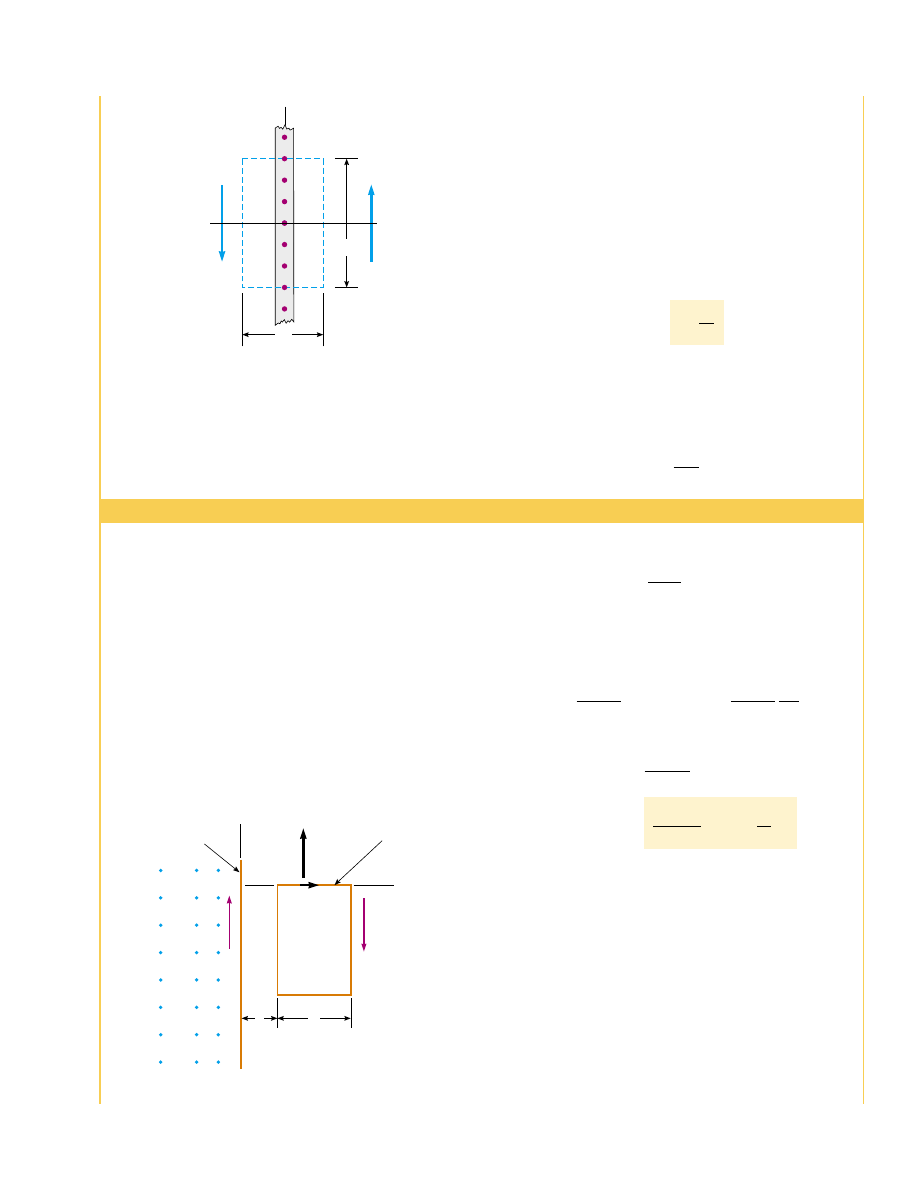Physics For Scientists And Engineers 6E - part 235

SECTION 3 0.3 • Ampère’s Law
937
Wire 1 in Figure 30.16 is oriented along the y axis and
carries a steady current I
1
. A rectangular loop located to the
right of the wire and in the xy plane carries a current I
2
.
Find the magnetic force exerted by wire 1 on the top wire of
length b in the loop, labeled “Wire 2” in the figure.
Solution You may be tempted to use Equation 30.12
to obtain the force exerted on a small segment of length
dx of wire 2. However, this equation applies only to two
parallel wires and cannot be used here. The correct
approach is to consider the force exerted by wire 1 on a
small segment d
s of wire 2 by using Equation 29.4. This
force is given by d
F
B
"
I d
s ! B, where I " I
2
and
B is
the magnetic field created by the current in wire 1 at the
position of d
s. From Ampère’s law, the field at a distance x
Figure 30.15 (Example 30.6) End view of an infinite current
sheet lying in the yz plane, where the current is in the y direc-
tion (out of the page). This view shows the direction of B on
both sides of the sheet.
Figure 30.16 (Example 30.7) A wire on one side of a rectangu-
lar loop lying near a current-carrying wire experiences a force.
from wire 1 (see Eq. 30.14) is
where the unit vector ' kˆ is used to indicate that the field
due to the current in wire 1 at the position of d
s points into
the page. Because wire 2 is along the x axis, d
s " dx iˆ, and
we find that
Integrating over the limits x " a to x " a * b gives
(1)
The force on wire 2 points in the positive y direction, as
indicated by the unit vector jˆ and as shown in Figure 30.16.
What If?
What if the wire loop is moved to the left in Figure
30.16 until a " 0? What happens to the magnitude of the
force on the wire?
Answer The force should become stronger because the
loop is moving into a region of stronger magnetic field.
Equation (1) shows that the force not only becomes
stronger but the magnitude of the force becomes infinite as
a : 0! Thus, as the loop is moved to the left in Figure 30.16,
the loop should be torn apart by the infinite upward force
on the top side and the corresponding downward force on
the bottom side! Furthermore, the force on the left side is
#
0
I
1
I
2
2$
ln
&
1 *
b
a
'
ˆ
j
F
B
"
F
B
"
#
0
I
1
I
2
2$
ln x
(
a
a*b
ˆj
d
F
B
"
#
0
I
1
I
2
2$x
[ˆ
i ! ('ˆk )]
dx "
#
0
I
1
I
2
2$
dx
x
ˆ
j
B "
#
0
I
1
2$x
('ˆ
k )
!
w
x
z
J
s
(out of paper)
B
B
Wire 1
Wire 2
×
y
×
×
×
×
×
×
×
×
×
×
×
×
×
×
×
×
×
×
×
×
×
×
×
×
×
×
×
×
×
×
×
I
1
x
I
2
ds
b
a
F
B
Example 30.7 The Magnetic Force on a Current Segment
hence the field should not vary from point to point. The
only choices of field direction that are reasonable in this
situation are either perpendicular or parallel to the sheet.
However, a perpendicular field would pass through the
current, which is inconsistent with the Biot–Savart law.
Assuming a field that is constant in magnitude and parallel
to the plane of the sheet, we obtain
This result shows that the magnetic field is independent of
distance from the current sheet, as we suspected. The
expression for the magnitude of the magnetic field is similar
in form to that for the magnitude of the electric field due to
an infinite sheet of charge (Example 24.8):
E "
/
20
0
#
0
J
s
2
B "
2B! " #
0
J
s
!
%
B(ds " #
0
I " #
0
J
s
!
along the direction of these paths is zero. By symmetry, the
magnetic field is constant over the sides of length ! because
every point on the infinitely large sheet is equivalent, and